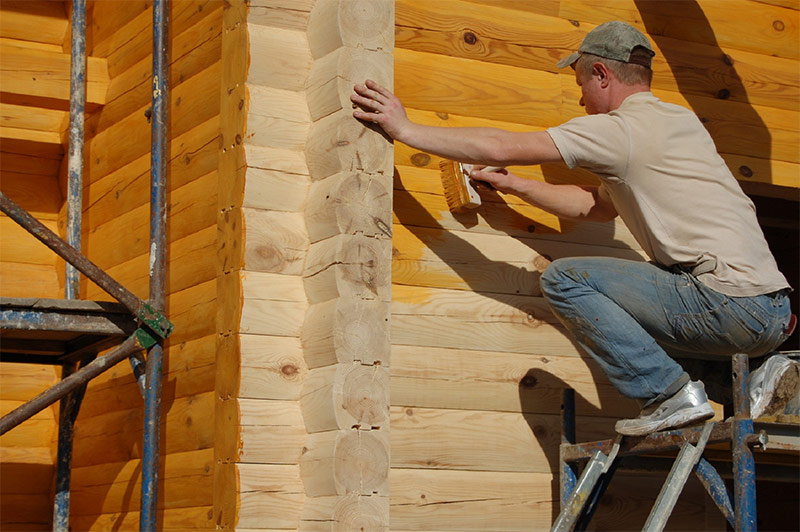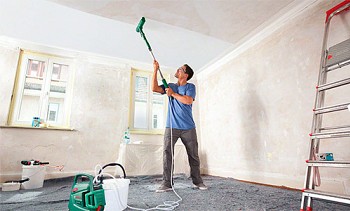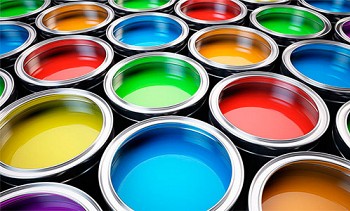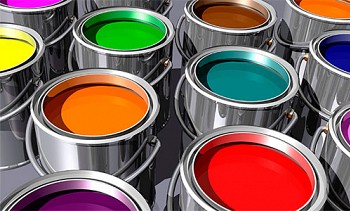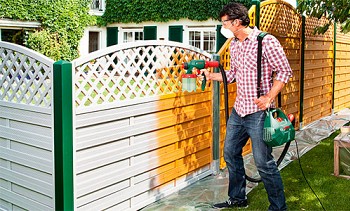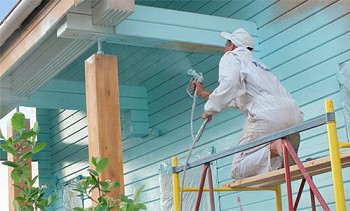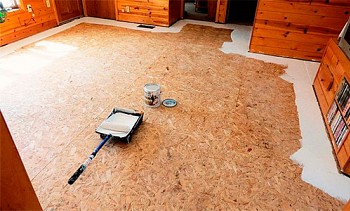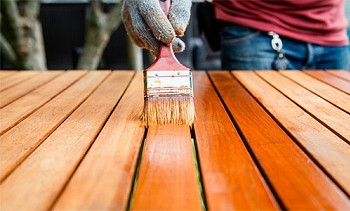What paint to paint a wooden house outside
A wooden house needs exterior decoration. This statement will be approved by every professional builder and owner of a wooden house. In addition to decorative functions, the decoration also performs protective ones - a wooden house is exposed to various dangers - moisture, sunlight, and biological pests.
To protect and decorate buildings from logs and beams, a lot of various materials have been created that are used almost equally widely and have found supporters, both among owners and among builders of wooden houses. In this article we will talk about paints, how to paint a wooden house outside and why paint is in many cases preferable to other materials.
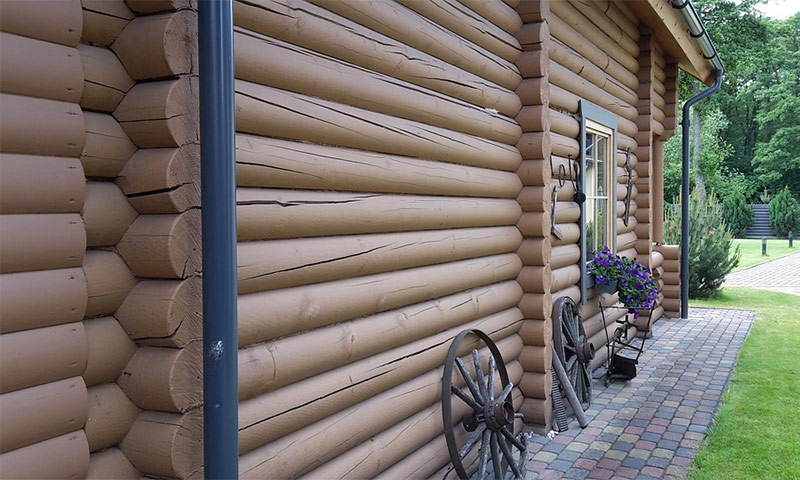
Content:
Comparison of painting with other finishes
For analysis, we take the most popular materials and compare them according to the parameters most noticeable during operation. You will see from the table that paints for wooden facades are not a panacea for all occasions, but in many ways are better and more practical than, for example, siding or ventilated facades made of porcelain stoneware.
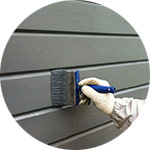 | 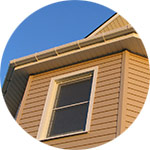 | 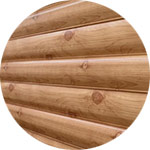 | 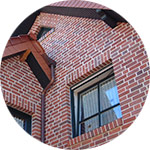 | 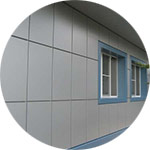 | |||||||
|---|---|---|---|---|---|---|---|---|---|---|---|
| Paint | Siding | Block house | Brick | Porcelain Tiles | |||||||
| Decorative properties | Perfectly preserves the texture and surface features of wood | Completely hides the base | High, imitates a rounded log | Completely covers the tree | Very decorative | ||||||
| Easy installation and application | Very easy to apply, only a brush or roller is needed | It is difficult to install, requires a special tool | Difficult installation | Sophisticated installation, concrete foundation required | Difficult installation | ||||||
| Cost | The cheapest finish | More expensive than any kind of paint | More expensive siding | One of the most expensive | Not inferior to brick | ||||||
| Durability | 6-10 years | 20 years | 10 and more years | 50 years | 50+ years | ||||||
| The ability to hide design flaws | Practically does not hide | Hides completely | Hides | Hides | Hides | ||||||
| Weather resistant | High, but depends on the choice of paint | High | High | The tallest | Not inferior to brick | ||||||
| Resistance to mechanical stress | Resistant only to occasional scratches and bumps. | Does not protect, may collapse even with a slight impact | Average | High | The most durable finish | ||||||
It can be seen from the comparison that the most budget option is painting the walls and other wooden elements of the facade. In terms of mechanical and fire-fighting properties, paint is inferior, for example, to porcelain tiles or bricks, but for the money that was saved when buying material and remunerating professional builders, you can buy the most modern flame retardants that make wood absolutely non-combustible for several decades.
According to the results of a comparative analysis, you can make a choice in favor of paint. Now one more equally important decision should be made - what paint to paint the wooden house on the outside. Manufacturers produce dozens of varnish coatings intended for external woodwork, but only some of them can be suitable for a wooden house.
It depends on the:
- material of the house (beam, log, blockhouse, lining, chipboard, etc.);
- climate zone;
- type of previous decoration;
- the budget.
As for paint manufacturers, it is best to focus on well-known brands - Tikkurila, Duf, Finnkolor, Beckers, any of the brands included in the Akzo Nobel concern. But you should buy them in large retail chains or well-known online stores.Unfortunately, there are a lot of fakes and frank hack on the market now, so if you decide to save a few rubles, you risk spoiling your house and incurring significant financial losses - reworking poor-quality painting is very time-consuming and expensive. What paint is better to paint a wooden house outside can be found on the manufacturers' official websites, if there is no paint offered to you there, then you should not buy it, even at the most attractive price.
What paints are used for exterior painting of a wooden house
Facade paints differ primarily in the composition of the film-forming components. And the type of solvent, the possibility of tinting and other parameters depend on them.
Antiseptics
Antiseptic impregnations are often used to treat the walls of a house. They can also be justifiably considered full-fledged paints. Antiseptics are glazing and covering. Glaze antiseptics create a transparent coating that emphasizes the texture and color of the wood.
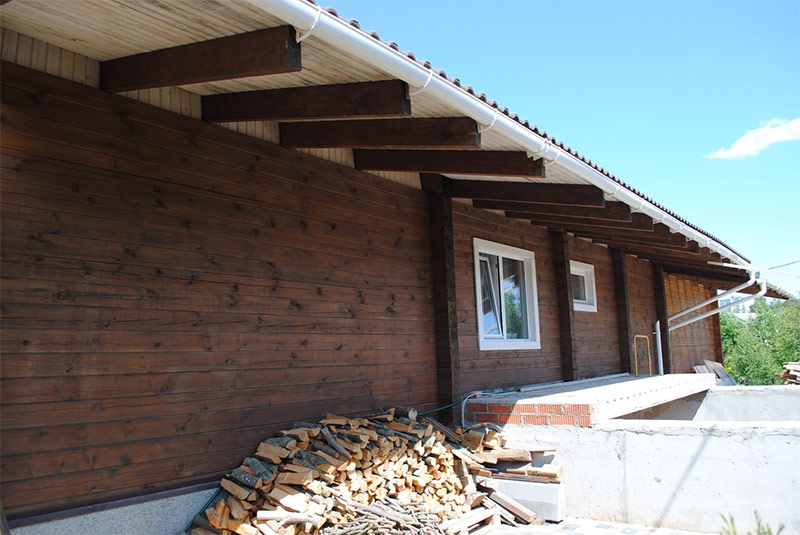
Coating antiseptics create an opaque coating on the surface, but retain the relief of the wood.
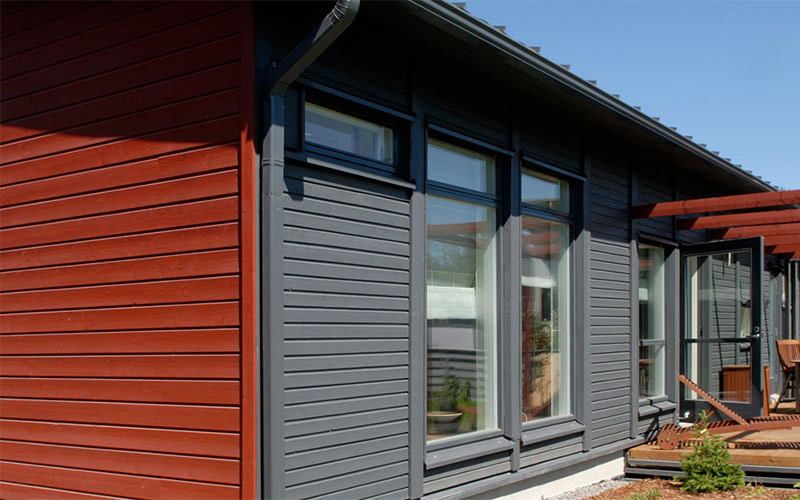
Antiseptics are very convenient for covering facades from planed or polished wood of valuable varieties, which have their own pronounced pattern and beautiful texture. Antiseptics are good because they penetrate deep into the massif of the tree. The compositions dry very quickly and in most cases for complete protection it is enough to cover the wood with two layers of impregnation. But such processing can only be performed on a fresh tree that has not previously been painted.
Antiseptic treatment should be repeated once every 2 to 3 years. But there are expensive tools that can be updated every 5-6 years. As a rule, they belong to the category of azure or colored impregnation and, together with the protective, perform a decorative role. The composition of many impregnations includes substances that inhibit ultraviolet light, the tree after this treatment does not darken and does not change color.
Acrylic or acrylate paints
The most fashionable and modern paints for exterior decoration of facades. Produced in the form of emulsions and dispersions, water-soluble. In most cases, the basis of such paints are acrylic resins or acrylic copolymers. Artificial or natural rubbers, antiseptics and fungicides can be added to the components. They are sold in the form of a white or transparent base with varying degrees of gloss - matte, glossy, semi-gloss.
A number of pigments and dyes have been developed for acrylic paints, with which they can be tinted in any desired color and shade. Some dye catalogs include up to 20,000 color schemes. But when buying such a paint, it is advisable to choose a pigment from a fan of flowers of the same manufacturer. Most factories keep the chemical compositions of their inks secret, so various reactions between products of different brands are possible.
Explosion, of course, will not, but the paint will dry for too long, go bubble or quickly burn out and change color. To avoid such “surprises”, it is better to buy the goods of one brand or check the paint and pigment for compatibility. Most major stores will tell you what to mix with. It’s best to directly tint the composition directly in the store, especially if it has a tinting machine and a color studio.
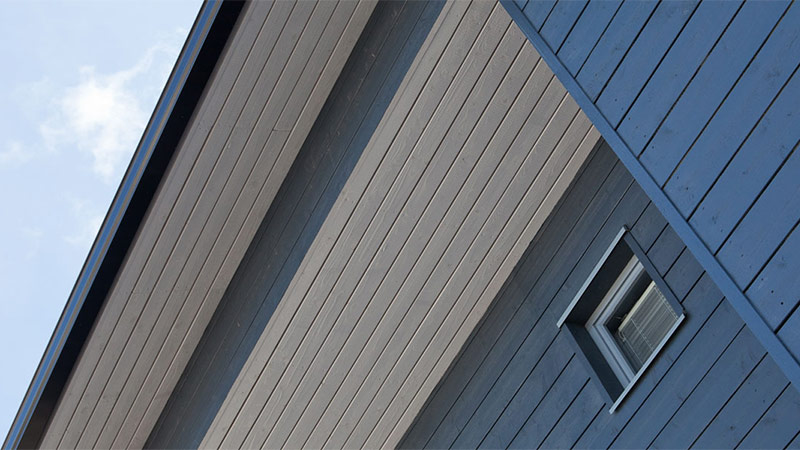
Acrylic paints:
- provide a wide range of colors;
- have excellent adhesion to wood;
- have no smell;
- absolutely safe in fire;
- eco-friendly and non-allergenic.
But they have a significant drawback - they are quite expensive, at least substantially more expensive than alkyd and oil.
Alkyd paints
These are well-known compounds that have been used for painting wooden walls for many years. Created on the basis of polycondensation resins, united under the same name “alkyds”, paints are characterized by relatively low production costs, excellent coating ability, and a high level of adhesion to wood.Moreover, you can paint as polished, planed or sawn wood, and logs, from which only the bark is removed.
Alkyd paints form a dense and durable highly elastic film that responds very well to temperature movements of wood and does not crack when dried, thermal expansion or other dimensional changes. When coating wood in two layers, the film becomes waterproof and slightly vapor permeable. Therefore, only dry wood is recommended to be painted with alkyd paints.
Some of the manufacturers include antiseptics and flame retardants in the composition of alkyd paints. Their presence must be found in the instructions for the paint before use. If there are no such components, then the walls need to be further treated before painting. This slightly increases the cost of painting, but the life of the coating and the house as a whole increases several times.
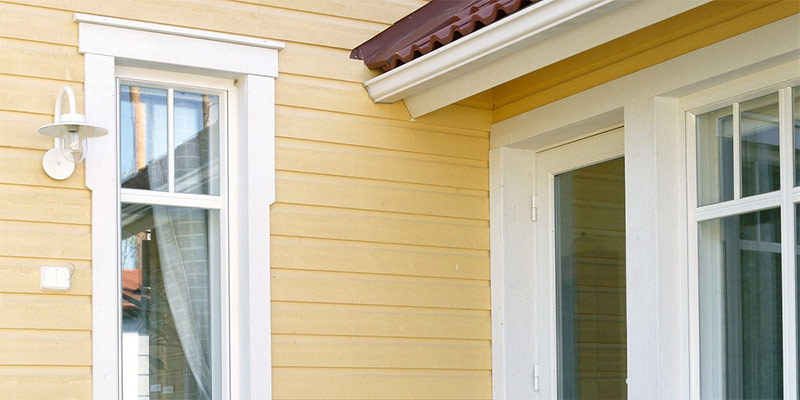
Alkyd paints are usually available in a fixed range of colors, but changing the hue is quite simple - you need to mix two or more colors in a certain proportion so that the color changes in the right direction. The quality of the finish does not change. But, as is the case with acrylic, it is advisable to use only paints from the same manufacturer for mixing.
In recent years, the world's leading manufacturers have been offering colorless alkyd paints, which are tinted in the same way as acrylic. This is very convenient, especially when painting a new house, when the question is sharply, what is the best way to paint a wooden house from the outside, so that it stands out among the neighboring ones, even built according to one project, which is often in cottage villages.
Alkyd paints are a full competitor in acrylic quality. They lose only in fire safety, and even then only during storage and work - it requires the observance of rather strict rules of behavior with fire and heaters. But after drying, the paint layer becomes almost non-combustible. However, due to quick drying, the paint does not have time to deeply absorb into the tree, which negatively affects its durability. Alkyd paints have good frost resistance and can tolerate temperatures below - 300FROM.
White spirit, solvent and similar weak organic solvents are solvents of paints on alkyd resins. They are moderately toxic and combustible, which also requires compliance with safety precautions when working. Although gasoline and kerosene also make alkyd paints quite well, their use is undesirable - the color fades somewhat, and the gloss can change in the direction of increasing dullness.
Oil paints
For a long time, oil formulations, the diluent of which is drying oil or other natural oils, have been a serious competitor to alkyd. But in recent decades, an increasing number of manufacturers have abandoned them - paints are quite difficult to use, dry for a long time and the characteristics of the finish coating are inferior to most modern compositions.
Despite their shortcomings, these paints are the most budget option. After application to wood, the paint is perfectly absorbed and creates a weathering resistant coating.
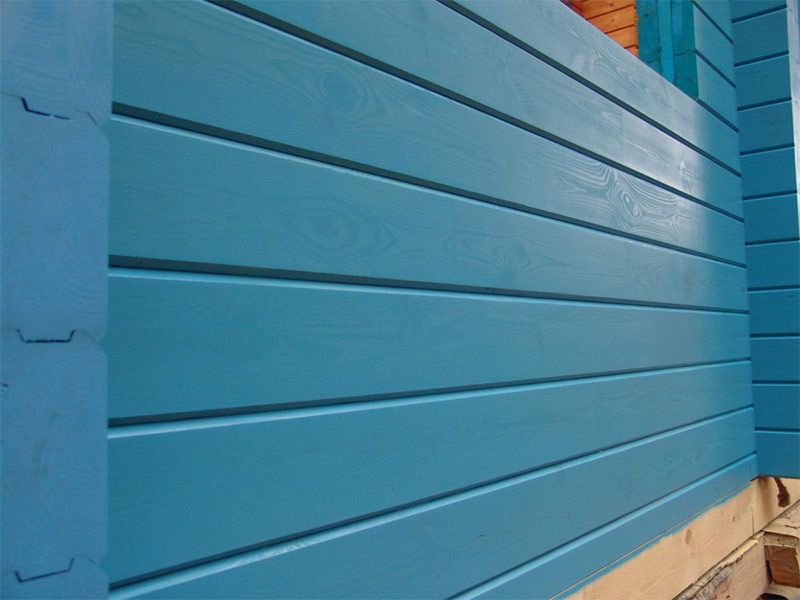
How to paint an old wooden house outside with old paint
There is only one recommendation - if the old layer holds well and is not covered with cracks and it does not show areas of film peeling, then you need to use the type of paint that was used previously. Alkyd can be confidently applied to oil paint - they blend well. But acrylic is not suitable here, although some manufacturers allow such contact.
In the event that you do not know what type of paint was previously used for painting the house, it can be determined by the appearance of the old coating. If the old coating has a leathery surface and slightly grinds, then most likely that the house was previously painted with acrylic paint. Acrylic cracks along the wood fibers.
If you can roll a small shred of paint into a tube, then most likely you are dealing with acrylic paint.If, when coagulating, a shred of paint cracks, then most likely it is oil paint. Oil paint forms a mesh crack during wear.
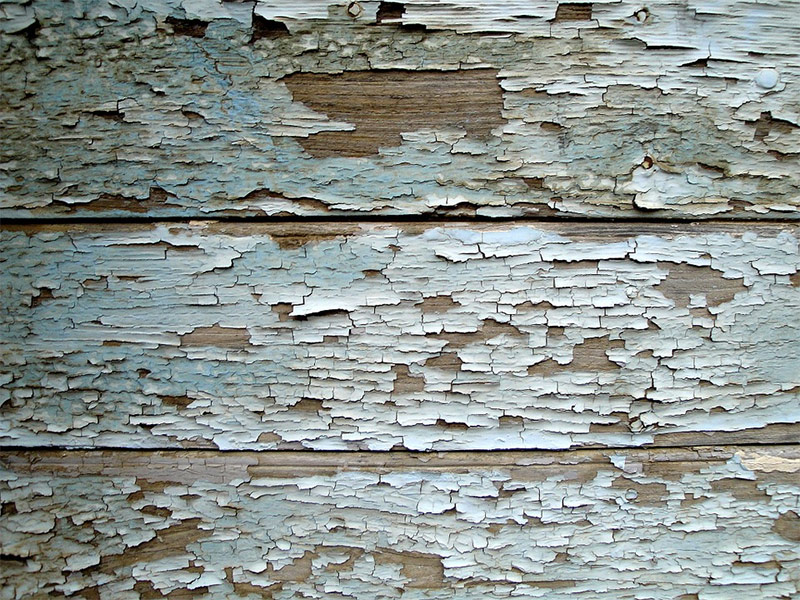
If the surface is covered with a glossy film of a glaze antiseptic, then the surface can be repainted with the same antiseptic or oil or alkyd paint. For repainting with acrylic paint, you will need to remove all the old antiseptic film to wood.
How to paint the walls of a new wooden house outside
Here, too, there are few recommendations - with acrylic or alkyd paint, if the tree is of ordinary species, glaze impregnation or azure, if the decoration is done with valuable wood with a good pattern. The primer is made only if it is provided by the manufacturer. In any case, you can paint the house outside only on a dry tree in warm weather, but not in direct sunlight. Any work on painting a wooden house should be done only when the wood is completely dry.
